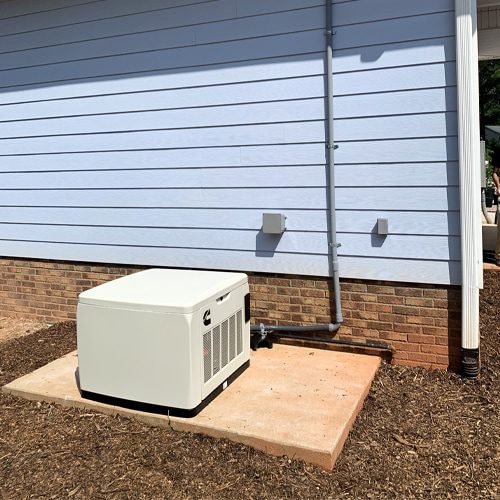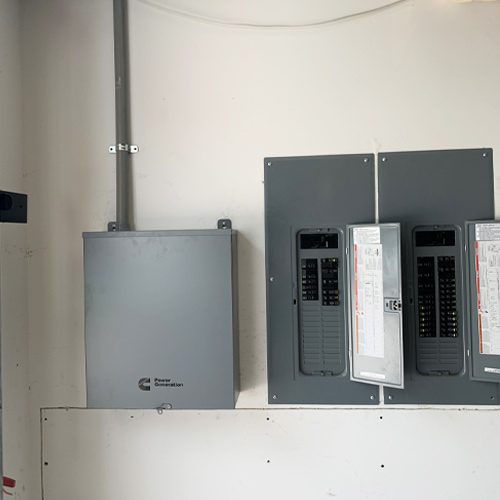How Do Home Generators Work?
Losing power to your home is a really uncomfortable experience. If a summer storm leaves you without electricity, you can’t do much against the hot Carolina days. Even worse, your food will spoil, and your phones will only last so long before they die.
In times like those, having a home generator is a huge relief. If you have one, you don’t have to get scared when the lightning starts outside. Before this big purchase, it’s a good idea to learn about how they work and why they help you. In this article, we’ll tell you everything about home generators.
How Generators Actually Work in Your Home
A home generator is also called a standby or backup generator. It gets hooked up to your home and provides a source of power when your house’s electricity goes out. In fact, the only time you’ll use one of these generators is during power outages.
When there’s an electrical outage, an automatic built-in generator senses it and turns on, generating electricity for your house.This is different from a little portable generator that’s just used to run tools outside. Those generators need electricity to run while these generators actually create power.
Backup generators will just sit around quietly until they’re needed. In some cases, they might automatically run on a weekly basis for a few minutes just to make sure the system is okay. They use gas and a little science to create electricity for you.
How Does a Gas Generator Work?
Throw your car’s engine on a slab of concrete and you get a gas generator – that’s the idea, at least. Since these are used when your house doesn’t have electricity, you can’t just plug the generator into an outlet. How else can you make power? Using gas.
It uses a gas combustion engine – that means that you’re feeding it natural gas or liquid propane as a fuel source. The engine fires and is converted to electricity which feeds right into your house. This is especially useful in electrical emergencies where you lose power.
Depending on the size of your generator and how it’s wired, you might be able to power your entire house during a power outage. Smaller gas generators focus on the essentials like refrigerators, security systems, HVAC units, and lights.
In some configurations, you don’t even have to flip the generator on when your power goes out, it just automatically kicks on. The only thing you have to worry about is keeping the fuel tank full and the system maintained. Once they’re installed, you can feel relaxed.
How Do You Install a Gas Backup Generator?
The generator installation process requires a licensed gas plumber and an electrician, like Rytec Electric. The electrician will work to connect the freestanding generator to your home’s electrical grid.
For generators using natural gas, the plumber will tie the generator right into your current gas connection. The installer will make sure everything is weather-proof since the unit is stored outside.
Where Are They Stored?
In most cases, you’ll find a backup generator on a concrete slab outside of a house. Since it uses gas as a fuel source, it needs to be in a well-ventilated area – hence the great outdoors. Storing a unit inside can result in carbon monoxide poisoning, the same problem you get when you leave your car running in a closed garage.
Are Home Generators Loud?
The noise will depend on how big your generator is. Keep in mind, these units are dead quiet when you’re not running them. That means that a majority of the time you might not even know your generator is out there.
When they run, it could sound like someone’s blowing leaves or mowing their lawn. Some units have special provisions to make them a lot quieter, but they come at a premium cost. In general, generators aren’t super loud.
How Long Does It Take a Generator to Start Working?
The length of time it takes for a generator to start working really depends on your setup and the style of generator you have. If you look at a Cummins generator specifically, the generator doesn’t start up immediately. This is a built-in safety feature.
The generator will wait a few minutes to ensure it wasn’t just sensing a brief electrical disruption. From there, the engine will warm up and when it’s at full speed, then it will finally switch to deliver power. The whole process takes a few minutes.
How Generators Work (More Technical Aspects)
If you’re inquisitive about the technical stuff, let’s talk more about this concept. Within your generator, the engine is tied to a transfer switch. This switch can either be automatic or manual. In the case of an automatic transfer switch, the load center automatically detects a loss of power.
It flips on and re-routes the circuit breaker to pull from the backup generator. In manual systems, you’ll need to go flip a physical switch to achieve the same outcome. You might see a little control panel next to your generator. This will give you access to perform an emergency shut off at any time.
If you look at the engine itself and wonder how the power is converted, it’s all thanks to the alternator. There’s a rotor on the engine’s shaft that is fed into an alternator. As the shaft rotates, the mechanical power is converted into electrical power that is then fed into your house.
Getting Your Own Home Generator
You just learned how home generators work and what they are. They can help keep your food from spoiling and your family comfortable during a power outage. If you want to get your own home generator, schedule a free consultation today. Our team is here to answer any questions – give us a call or email to learn more.


